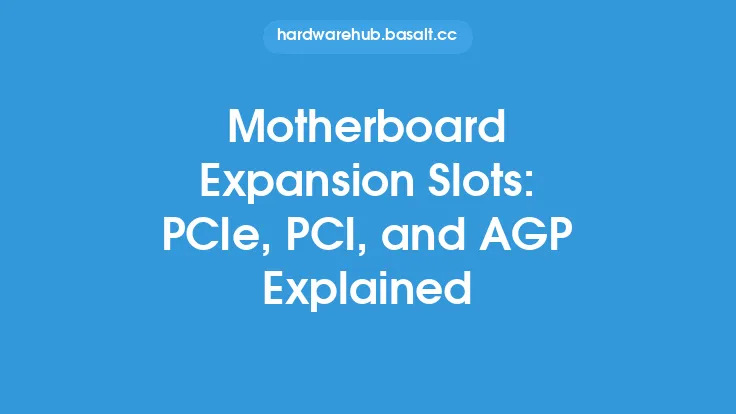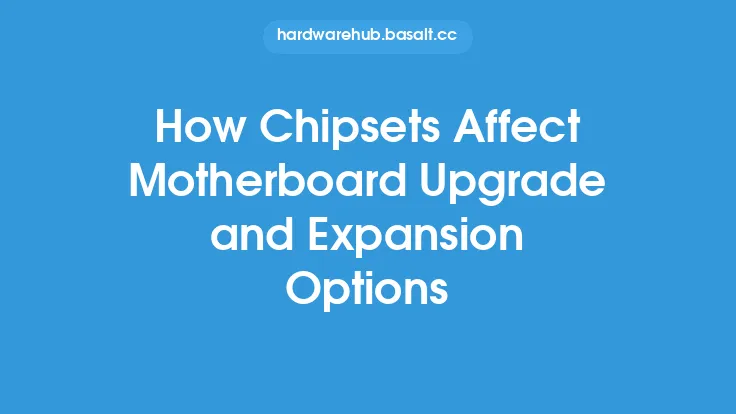When it comes to server motherboards, expansion options play a crucial role in determining the overall performance, scalability, and functionality of the system. The type and number of expansion slots available on a server motherboard can significantly impact its ability to support various peripherals, networking devices, and storage solutions. In this article, we will delve into the world of server motherboard expansion options, exploring the different types of expansion slots, including PCIe, PCI-X, and others, and discussing their features, benefits, and limitations.
Introduction to Expansion Slots
Expansion slots are a critical component of server motherboards, allowing users to add new hardware components, such as graphics cards, network interface cards, storage controllers, and other peripherals, to the system. These slots provide a way to increase the functionality and capabilities of the server, enabling it to support a wide range of applications and workloads. Over the years, various types of expansion slots have emerged, each with its own set of features, advantages, and disadvantages.
PCIe Expansion Slots
Peripheral Component Interconnect Express (PCIe) is a high-speed expansion slot standard that has become the de facto interface for server motherboards. PCIe slots offer a significant improvement over traditional PCI and PCI-X slots, providing faster data transfer rates, lower latency, and greater scalability. PCIe slots are available in various configurations, including x1, x4, x8, and x16, with each configuration offering a different level of bandwidth and performance. PCIe expansion slots support a wide range of devices, including graphics cards, network interface cards, storage controllers, and other peripherals.
PCI-X Expansion Slots
PCI-X (Peripheral Component Interconnect Extended) is an older expansion slot standard that was widely used in server motherboards before the advent of PCIe. PCI-X slots offer a maximum data transfer rate of 1.06 GB/s, which is significantly slower than PCIe. However, PCI-X slots are still supported by many server motherboards, particularly in legacy systems or those that require compatibility with older hardware. PCI-X expansion slots are available in various configurations, including 32-bit and 64-bit, with each configuration offering a different level of performance and compatibility.
Other Expansion Slot Options
In addition to PCIe and PCI-X, server motherboards may also feature other expansion slot options, such as PCI (Peripheral Component Interconnect) and AGP (Accelerated Graphics Port). PCI slots are an older standard that offers a maximum data transfer rate of 133 MB/s, while AGP slots are designed specifically for graphics cards and offer a maximum data transfer rate of 2.1 GB/s. However, these expansion slot options are largely obsolete and have been replaced by PCIe and other newer standards.
Features and Benefits of Expansion Slots
Expansion slots offer a range of features and benefits that make them an essential component of server motherboards. Some of the key advantages of expansion slots include:
- Scalability: Expansion slots enable users to add new hardware components to the system, increasing its scalability and flexibility.
- Flexibility: Expansion slots support a wide range of devices, allowing users to configure the system to meet their specific needs and requirements.
- Performance: Expansion slots, particularly PCIe, offer high-speed data transfer rates, enabling users to take advantage of high-performance peripherals and devices.
- Compatibility: Expansion slots provide a way to support legacy hardware and devices, ensuring compatibility with older systems and applications.
Limitations and Considerations
While expansion slots offer a range of benefits, there are also some limitations and considerations to be aware of. Some of the key limitations and considerations include:
- Bandwidth: Expansion slots have limited bandwidth, which can impact performance and scalability.
- Power consumption: Expansion slots can consume significant power, particularly when supporting high-performance devices.
- Compatibility: Expansion slots may not be compatible with all devices or peripherals, requiring careful planning and configuration.
- Cost: Expansion slots can add significant cost to the system, particularly when supporting high-end devices or peripherals.
Best Practices for Expansion Slot Configuration
To get the most out of expansion slots, it's essential to follow best practices for configuration and management. Some of the key best practices include:
- Carefully plan and configure expansion slots to meet specific needs and requirements.
- Ensure compatibility between expansion slots and devices or peripherals.
- Monitor power consumption and bandwidth to optimize performance and scalability.
- Regularly update and maintain expansion slot firmware and drivers to ensure optimal performance and compatibility.
Conclusion
In conclusion, server motherboard expansion options, including PCIe, PCI-X, and others, play a critical role in determining the overall performance, scalability, and functionality of the system. By understanding the features, benefits, and limitations of expansion slots, users can configure and manage their server motherboards to meet their specific needs and requirements. Whether you're building a new server or upgrading an existing one, expansion slots are an essential component to consider, offering a range of benefits and advantages that can help optimize performance, scalability, and productivity.





